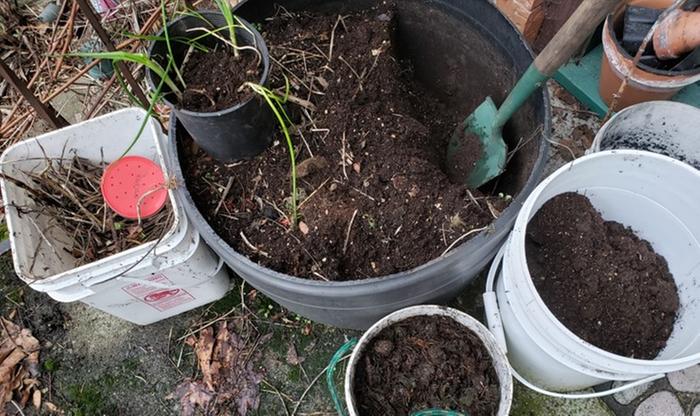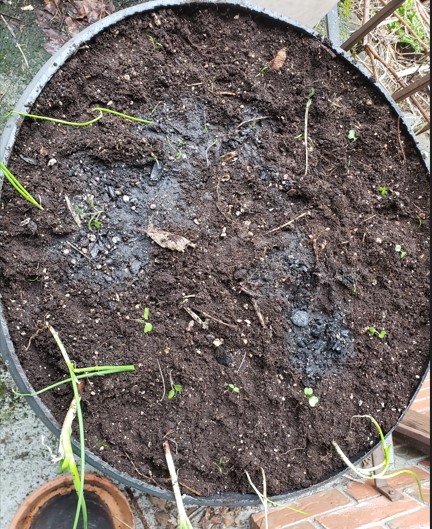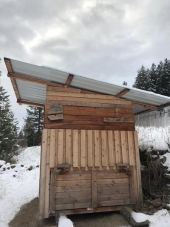
 24
24




 18
18




![Filename: Tall-wood-rack.png
Description: [Thumbnail for Tall-wood-rack.png]](/t/207869/a/202972/Tall-wood-rack.png)
My online educational sites:
https://www.pinterest.ca/joelbc/homestead-methods-tools-equipment/
https://www.pinterest.ca/joelbc/mixed-shops/
 11
11




ah
 14
14




gardener, homesteader
 14
14




sow…reap…compost…repeat
 12
12






Visit Redhawk's soil series: https://permies.com/wiki/redhawk-soil
How permies.com works: https://permies.com/wiki/34193/permies-works-links-threads
 17
17




 14
14




SKIP books, get 'em while they're hot!!! Skills to Inherit Property
See me in a movie building a massive wood staircase:Low Tech Lab Movie
 11
11




Mike Haasl wrote:One small/easy project is putting a coat hook near the door of every shop/greenhouse/shed on the property. I invariably hand a flannel or coat somewhere and, especially in the shoulder season, leave it behind when I leave that space.
 7
7




SKIP books, get 'em while they're hot!!! Skills to Inherit Property
See me in a movie building a massive wood staircase:Low Tech Lab Movie
 8
8




Mike Haasl wrote:That's one of many reasons to live where I live :) No venomous spiders, venomous snakes or termites.
 13
13




 8
8




 8
8




 8
8




 10
10




 7
7




 4
4




 7
7




jackie woolston wrote:Kathleen, You make me smile...calves love to romp!Like whirling Derbishes! I take it they are feeling better?
 6
6




 7
7




jackie woolston wrote:Kathleen, I have an angus/"jersey" cross too. Which had me baffled. Since none of the angus forest bulls were ever in my pasture to breed my cows. Head scratcher! This year though, the mystery was resolved! Angus bull on little road to the forest that runs along my pasture...Mama cow (Lilly, her name...black baby, Tiger Lilly)...so this past summer I see this: Angus bull on road, Lilly putting on "the flirt" and all be if she just backed her business end up to the fence and Angus bull mounted her through the fence...slick as a whistle and "none's" the wiser! My bull (Throck Morten, Buddy for short) just stood there dumb-founded, taking notes.
 7
7




 4
4




 5
5




 11
11




Ajeet E-RYT
Bliss Yoga Teacher
865-282-6515
ajeetlotus@gmail.com
 9
9




ajeet khalsa wrote:I planted garlic in december when I got back into town-i live in zone 7, Tennessee. It's starting to sprout!
ah
 12
12










 9
9




Kathleen Sanderson wrote:There's a sinkhole in my back yard, probably a little over 100' from the house; my brother and our nephew, who's been here most of the winter, got intrigued and dug the sinkhole out somewhat to see how deep it was.
My online educational sites:
https://www.pinterest.ca/joelbc/homestead-methods-tools-equipment/
https://www.pinterest.ca/joelbc/mixed-shops/
 10
10




Joel Bercardin wrote:
Kathleen Sanderson wrote:There's a sinkhole in my back yard, probably a little over 100' from the house; my brother and our nephew, who's been here most of the winter, got intrigued and dug the sinkhole out somewhat to see how deep it was.
I'm curious about the diameter of the sink hole. I assume it's more or less round, but how wide across it?
There's some land that's not on our property, but I can walk to it in seven or eight minutes. Part of a neighbor's place, but not near their house or outbuildings. There are sinkholes there, and they range from maybe four feet to seven feet across.
 17
17




sow…reap…compost…repeat

 11
11




 16
16





Still slingin’ Avacado pits
 13
13




 12
12




Observation is where intelligence is born.
 12
12




 2
2




Invasive plants are Earth's way of insisting we notice her medicines. Stephen Herrod Buhner
Everyone learns what works by learning what doesn't work. Stephen Herrod Buhner
 5
5




Joel Bercardin wrote:Spring is a time for fresh ideas & fresh human energy. But winter can present prsctical ideas for improvement. This is one of the sorts of things I like to get out & do in the spring. What I’m sharing was simple, therefore I’d call it small.
We used to have a firewood rack like the tall one shown here (ours wasn’t indoors but on our deck, just outside the door we most often use). But that rack wasn’t great for us. First, it would have been fine if all our firewood rounds or splits were roughly the same size, but if you wanted to choose one or two that happened to be in the lower part of the stack, it wasn’t at all easy to take them out. Second, my wife likes to bring in a few pieces sometimes, and she often found that ones stacked up in the top of a full stack were troublesome to remove.
So I designed a low-profile rack. The design was simple, using 1.5” and 2” square mild-steel tubing. I enjoyed making it and we find it’s not only adequate but convenient. For us, the rack accommodates a 24-hours stack of mid-winter wood — and we can easily get to our choice of pieces the size we want. Our winter’s supply is conveniently stored about 25 feet away in our larger shed.
Also, there is room underneath for temporary placement of ‘whatever’. For instance, we often use the spot on the porch as a second refrigerator in winter (see the largish pot in the pic).
Best serotonin-booster ever: garden time.
 8
8




Best serotonin-booster ever: garden time.
 3
3




Amy Gardener wrote:Time for another small, easy permaculture project that gives a surge of JOY!
Last year's stored purple potatoes were reaching out of their box with purplish green sprouts, just aching to get into the almost-Spring-soil: 50 of them! I planted about 30, whole, in a new garden full of composted horse manure in 3 rows, spaced 3' apart. Shaped like like a quarter circle with a 6' radius, (a scallop shell), the garden rows arc like a rainbow. The two walking paths between the rows are now lined with cardboard (bonus, I cleaned out all the cardboard in the house!).
I packaged the remaining 30 potatoes into 3 packs of 10 with planting instructions for some neighbors who enjoyed last year's harvest. Giving away potatoes that will (with the help of caring humans) will reproduce eternally gives me that awesome feeling of permaculture accomplishment.
Best serotonin-booster ever: garden time.
 7
7




“Only when the last tree has been cut down, the last fish been caught , and the last stream poisoned, will we realize we can’t eat money. “

|
Even monkeys fall from trees. I brought you an ice pack tiny ad.
turnkey permaculture paradise for zero monies
https://permies.com/t/267198/turnkey-permaculture-paradise-monies
|







